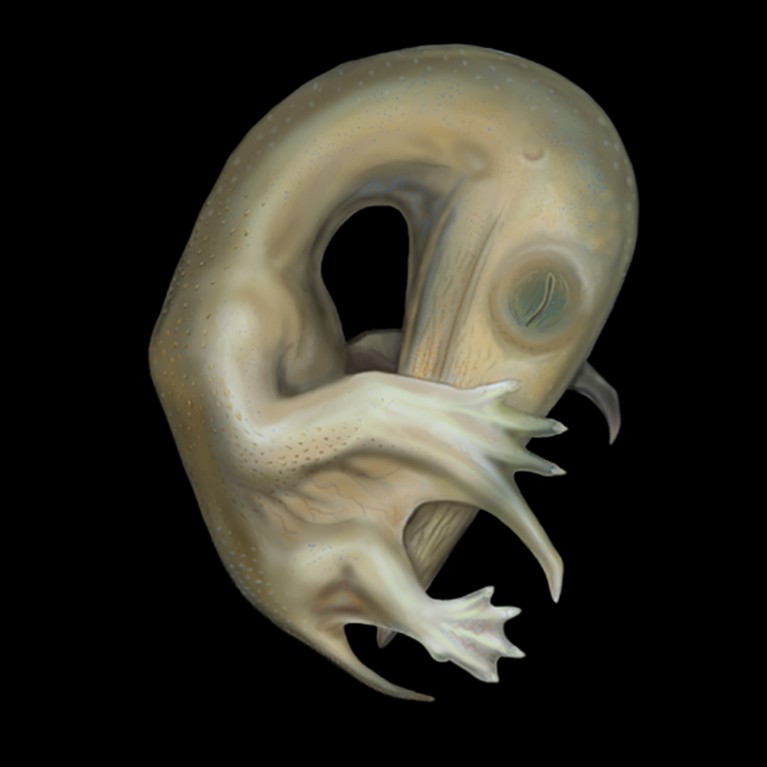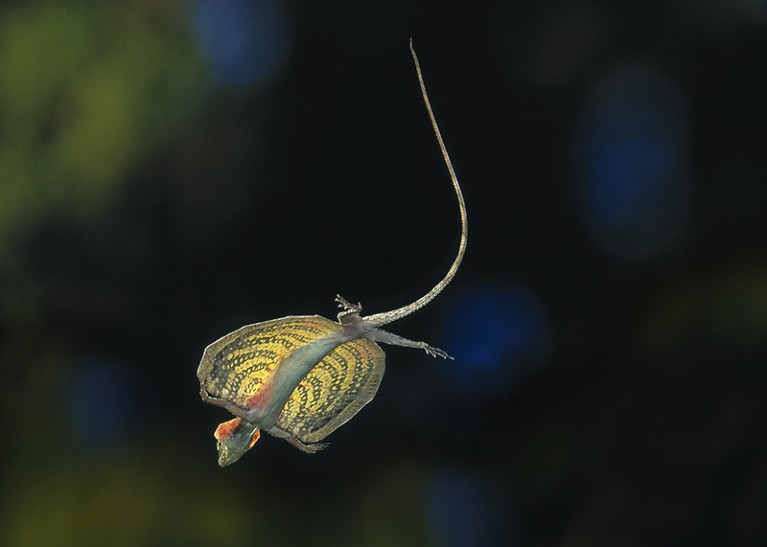How to Build a Dragon or Die Trying: A Satirical Look at Cutting-Edge Science Paul Knoepfler and Julie Knoepfler World Scientific Publishing (2019)
The school science fair, a staple of US education, is not always an arena for daring experimentation. If I had a penny for every vinegar-fuelled baking-soda volcano or lemon-powered battery ever entered, I’d be sitting on an Everest-sized stash of small change. But in eighth grade, while other kids were busy constructing safe scientific stalwarts, Julie Knoepfler was dreaming big. As a young enquiring mind at a California school, she decided to explore how to build a dragon.
It was bold, it was brazen and her ‘sky’s the limit’ thinking could have stopped there. But Julie’s father is Paul Knoepfler, a stem-cell biologist at the University of California, Davis. Having an in-house consultant in the life sciences gave the thought experiment wings. The result is How to Build a Dragon or Die Trying, their co-authored book exploring how advances in cell biology, CRISPR gene editing and bioengineering might be used to make a live dragon. The result is a gloriously tongue-in-cheek scientific epic.

Authors Julie Knoepfler and Paul Knoepfler.Credit: Melanie Knoepfler
We have an enduring fascination with dragons — the beasts appear in the classical Greek Argonautica and pre-medieval Old English epic Beowulf, and remain a trope in video gaming and high-fantasy literature. Who among us wouldn’t be curious to see a real-life Smaug from J.R.R. Tolkien’s The Hobbit, or Norbert/Norberta from the Harry Potter series? And according to the Knoepflers, a twenty-first-century dragon should not disappoint. It should be winged, fearsome and fire-breathing. It should be big enough to ride, smart enough to train and powerful enough to scare the wits out of anyone who disrespects it. It could even have optional extras. Multiple heads, night vision and venom-tipped horns are, apparently, not out of the question.
The best place to start, they advise, is with a living animal whose biology could be altered to become dragon-like. Draco lizards such as the tiny Draco volans sport skin flaps called patagia that act as ‘wings’ and flight stabilizers, helping them to glide between trees. Genetic or stem-cell techniques could conceivably engineer an individual to be bigger, and have larger, functional wings. But as the book notes, “Since these additions could add weight to its small body mass, making it harder to fly and soar, we shouldn’t go overboard on wing size.”

An artist’s impression of how a dragon embryo might look, according to How to Build a Dragon or Die Trying.Credit: Gareth Monger
These ‘starter’ animals could then be ‘infused’ with choice bits of anatomy from different animals. The electric eel (Electrophorus electricus) has specialized cells in three of its organs that produce an electric field. Cows have a rumen — the first stop in their digestive tract — which produces prodigious amounts of methane. Somehow united in a proto-dragon, the gassy emanations, ignited by a burst of current in the mouth, just might be able to toast marshmallows. (If fire-breathing fails to take, the beast could spray fiery chemicals à la bombardier beetles, which fire benzoquinone in a hot, noxious spray from their backsides.)
Meanwhile, Komodo dragons (Varanus komodoensis) have been known to reproduce by parthenogenesis. If one of these served as the starter animal, it might even be able to pump out extra copies without the need for a love interest.
It’s these and many other intriguing scientific details that help to tether the Knoepflers’ erudite flight of fancy to terra firma. They delight in their trove of zoological trivia, and in pointing out all the ways humans could die during the dragon-making endeavour. “We figure the most likely way we’d meet our tragic end would be because our dragon either incinerated us or dropped us from a high altitude,” they write. (Someone call health and safety.)

The Draco volans lizard has skin flaps that act as flight stabilizers, helping it to glide between trees. Credit: Stephen Dalton/Nature Picture Library
Why, then, would anyone even contemplate dragon-building? If I owned a dragon, I’d train it to incinerate anyone talking loudly on their mobile phones, eating with their mouth open or queue-jumping. But according to the Knoepflers, there might be other reasons to build a dragon, too. These include providing sustainable air travel, and the promise of a phone call from Elon Musk.
The Knoepflers, of course, don’t really want to make a dragon: aside from the technical hurdles, the idea commandeers ethically rocky territory. But they do want to make their readers think. Stem cells, gene editing and cloning are never far from the news. Working in the field, Paul Knoepfler tires of the way the media sometimes sensationalize this fast-paced field. The book seeks to satirize that, and steer people away from unnecessary flimflammery.
How to Build a Dragon or Die Trying is deliberately flamboyant and outrageous. It’s also funny and smart. Far from a how-to guide for ne’er-do-wells to weaponize reptiles, it is designed to spark healthy curiosity in anyone who enjoys a ripping good science read.


 Gene editing: Running with scissors
Gene editing: Running with scissors
 The clash of hype, hope and stem cells
The clash of hype, hope and stem cells







